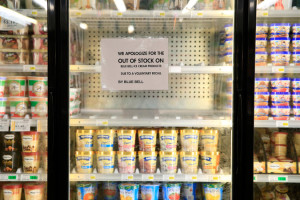There are certain folks who are at higher risk for foodborne illness, the young, elderly, pregnant and immunocompromised.
Food safety is about making risk decisions. When it comes to my kids, who can’t really make salient risk/benefit decisions around food safety, I’m cautious. I don’t mess around with undercooked meats and temp everything.
Hope, faith, trust-based food safety is even riskier for those who are more susceptible to pathogens. Eating out is largely a trust-based activity; trust in the managers, food handlers and suppliers when it comes to keeping meals safe.
A San Diego man, who had a weakened immune system, died in 2014 following complications associated with Vibrio he got from an undercooked scallop dish in 2013, according to the Napa Valley Register.
Redd restaurant in Yountville is being sued for wrongful death by the family of a San Diego man who claimed to have suffered food poisoning attributable to scallops eaten as an appetizer and as an entree.
Larry Sacknoff, 61, died Aug. 16, 2014, due to complications caused by Vibrio parahaemolyticus, a bacteria found in estuarine or marine environments, according to court documents.
About a year earlier on July 21, 2013, Sacknoff enjoyed scallops at the Yountville restaurant, the suit alleges. He became ill with diarrhea, a symptom of Vibrio, and so did his friends, Mary and Scott Papas, who ate at Redd with him, according to the civil suit.
Sacknoff, a former television sportscaster in San Diego, had a history of heart problems and had recently undergone a heart transplant prior to visiting the restaurant. This caused him to have a compromised immune system and inhibited his ability to fight off infection, according to the complaint. “Larry’s fragile condition simply could not handle the aggressive Vibrio pathogen,” the family alleges.
He was treated in the San Diego area for the lingering effects of his infection between Aug. 2, 2013 and March 7, 2014, according to court documents. His treatment included several hospitalizations.
Redd Restaurant and Pierless Fish Corp., a scallop supplier based in Brooklyn, New York, were both named as defendants. In court papers, both denied all allegations.
A settlement with Pierless Fish Corp. was reached in September, and claims against the company were dismissed on Nov. 12, according to Pierless’ attorney Michael Burke with Vogl Meredith Burke LLP in San Francisco. Burke said the terms of the settlement are confidential.
In response to a complaint from Sacknoff’s family, Napa County’s environmental health division inspected the restaurant on Aug. 6, 2013.
Redd, which got a passing B grade, was found to be out of compliance in three food safety areas, including:
“Scallops prepared during this inspection were less than thoroughly cooked,” the inspector reported. Scallops were served between 108 and 132 degrees, failing to meet the 145-degree cooking requirement, according to the report.
The plaintiffs are seeking unspecified damages due to strict product liability, negligence, and breach of implied warranties. They also seek wrongful death damages and, in their complaint filed on July 16, 2015, demanded a jury trial.
A jury trial is scheduled for July 11.












